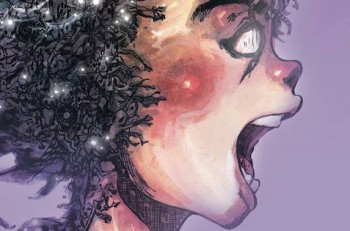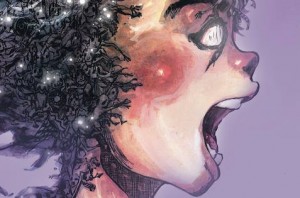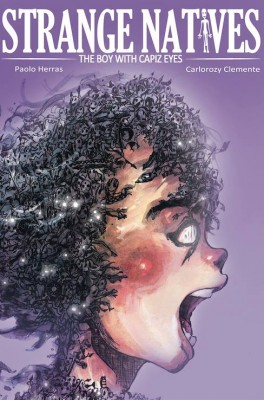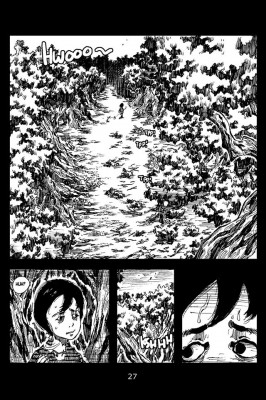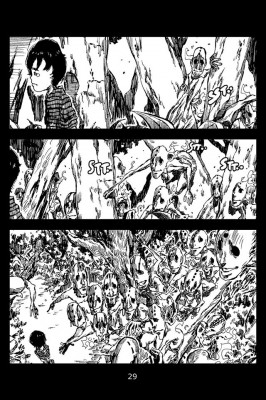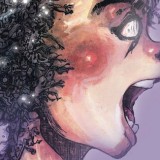
COMIC BOOK REVIEW: Strange Natives – The Boy With Capiz Eyes
Raves
Rants
“Strange Natives” written by Paolo Herras and drawn by Carlorozy Clemente, is an eloquent plea to Filipino readers to reconnect to our much-overlooked culture and values, nature and the environment. Much strangeness – wonderful strangeness happens …
When Granny Cooks Your Goose
What a bummer – after getting mixed up in one too many fights in school, cranky city boy Francis found himself carted off by his parents to an unnamed provincial town in the Philippines to stay with his grandmother. Apparently, they have all but given up on trying to straighten him up, and desperately hoped his lola might have better luck.
Thus begins Strange Natives - The Boy With Capiz Eyes, written by Paolo Herras and drawn by Carlorozy Clemente. As the story unfolds, Francis’ grandmother then states some very important house rules:
“What you borrow, put it back.”
“What’s on your plate, finish it. No complaints.”
“What’s not yours, don’t touch.”
“Never ever go outside alone.”
Pretty basic, easy-to-follow regulations – all of which Francis proceeds to break, one by one. Clearly, the kid’s not liking his stay with Grandma, or his rural surroundings. But like a Transformer, there’s more to Grandma than meets the eye. Francis was introduced to some of what could only be described as “mythical” members of his lola‘s family. Let’s just say they wouldn’t look out of place in a Lola Basyang story, or in a World Mythology 101 class …
Things soon come to a head when Francis runs away after being scolded for disrupting another evening meal. He takes refuge in a dark, mysterious forest located behind his grandmother’s house, but eventually becomes lost. As he wanders aimlessly within the strange rooms (yes, this is the right word) of the forest, he encounters a giant Igorot-warrior-like being who “blinds” him with white capiz eyes. Thus rendered sightless, will Francis soon learn to really “see”?
Reading Strange Natives reminded me of a line from Antoine de Saint-Exupery’s The Little Prince – “The most beautiful things in the world cannot be seen or touched, they are felt with the heart.” But Francis was far from being a prince – he was unruly, destructive and disobedient. And he was blinded because he was unable to see and value what was really important.
“Why do you say sorry little trouble? You don’t feel sorry when you hurt the trees that shelter us or the plants that feed us. You don’t say sorry because you don’t feel sorry. Because you don’t know sorry.”
I think this is what this comic wants to point out – we, and especially the younger generation, are quickly losing touch with our past, our history, our traditions and what defines Filipino culture. In some degree, we all have capiz eyes.
“First of firsts, you need to see. And when you see, second you will know. Only then can you truly be sorry times three.”
Carlorozy’s art is very distinctive, and has a dense, “organic” feel. It’s especially apparent when he depicts very atmospheric settings like the forest and his lola‘s old house. His style is also well-suited in portraying certain ethnic and Filipino elements. Some examples are the costumes of the town festival dancers and the more interesting secondary characters in the story, such as the giant Igorot-warrior-like being, who is accompanies by millions of small floating nature spirits. Think of the kodamas in Hayao Miyazaki’s Princess Mononoke – but with tattoos.
The story, as penned by Paolo Herras, makes an eloquent plea to its readers to reconnect to Filipino culture and values, nature and the environment. It has its compelling moments and can draw the reader in to find out more. There is a sense of earnestness and purpose that makes it appealing.
[Check out… LET’S TALK COMICS: A Journey From Film To Comics With Paolo Herras!]
However, the story could also use some tweaks. While some scenes were vital to the story, they seemed to randomly happen somewhere in the story’s timeline. Coming across such scenes became a bit jarring at times. Imagine driving along a smooth concrete highway, but you suddenly hit a few bumps and potholes along the way. I’m aware that this is the only first chapter of a longer story, but a few other scenes seemed rather abrupt, and I was left hanging. Smoother transitions between scenes wouldn’t hurt. And this holds true for the artwork. While it is atmospheric, it veers towards dark and murky in several panels. More shading and a bit more light would help to bring an added depth and dimension.
Despite these flaws, Strange Natives is a solid and thoughtfully crafted work. And I’m looking forward to more strangeness and meeting even stranger natives.

